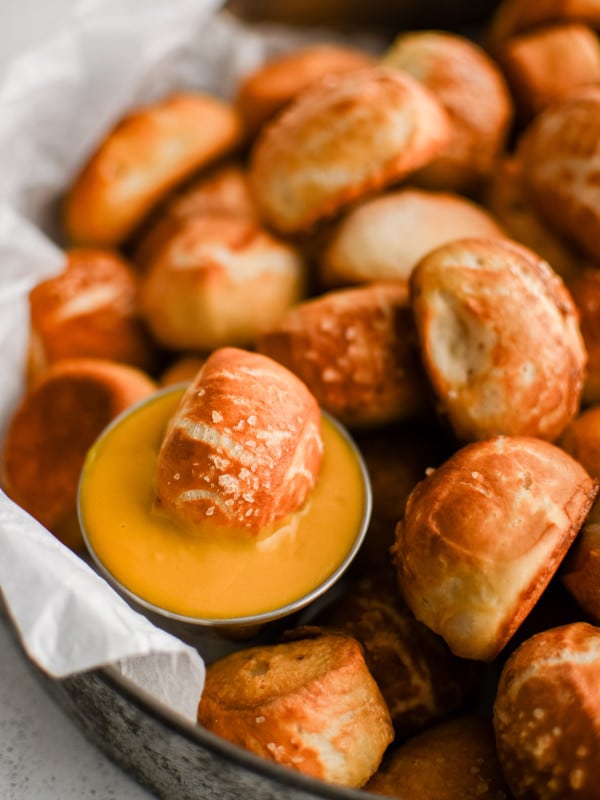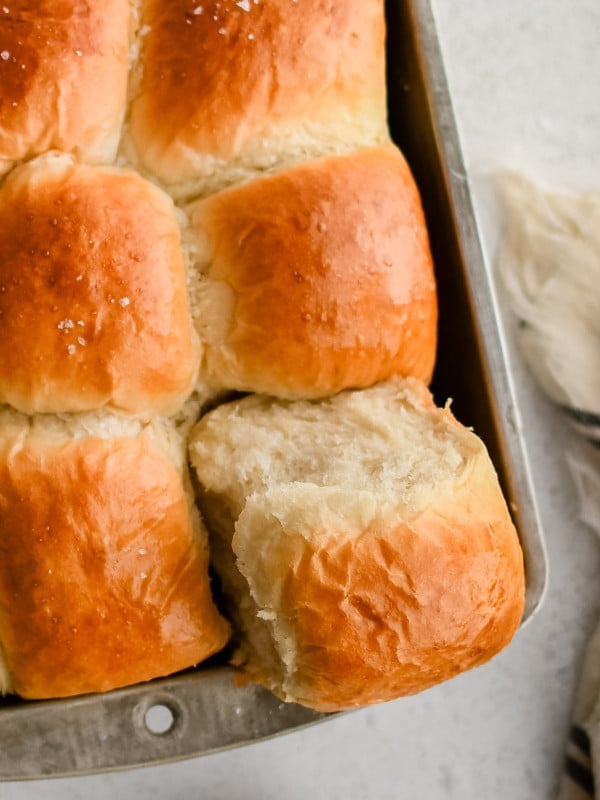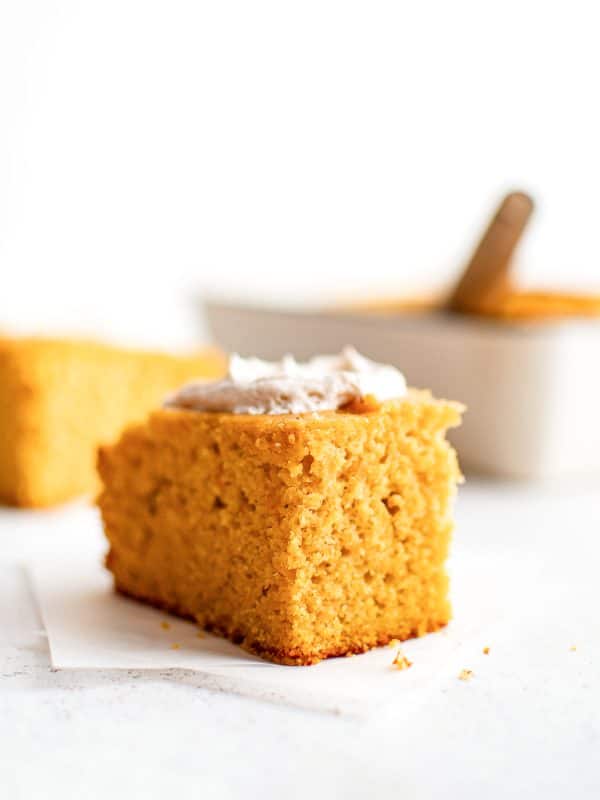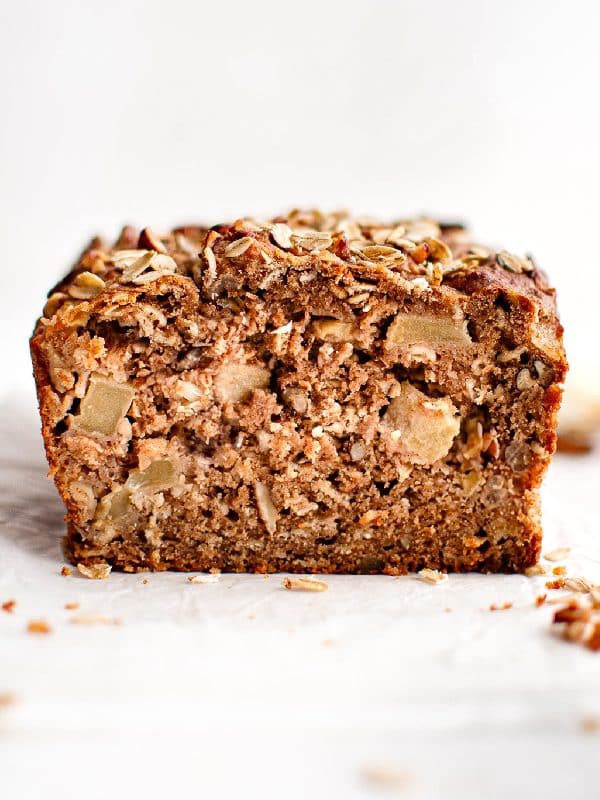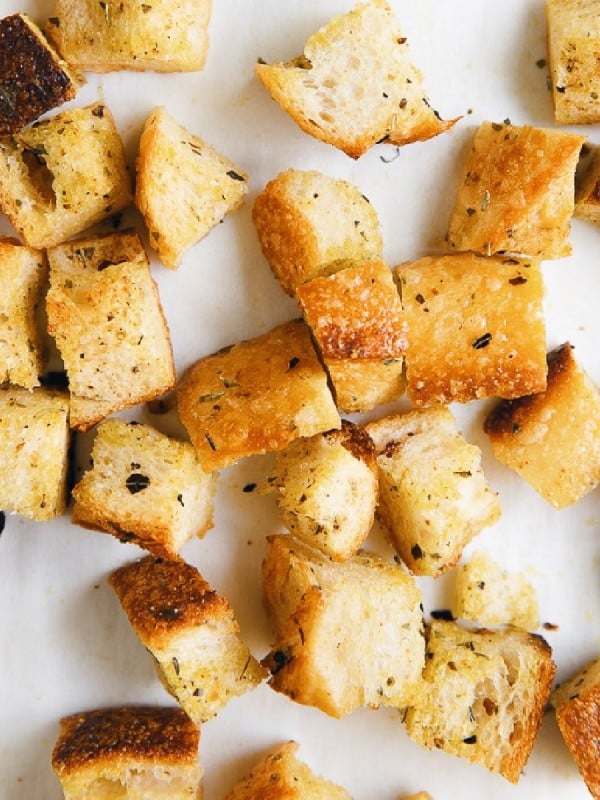This post may contain affiliate links. See my disclosure policy.
These Homemade Buttermilk Biscuits are soft, buttery, and filled with delicious flakey layers. Made with only six ingredients, they’re perfect for breakfast with sweet jam or sausage gravy.
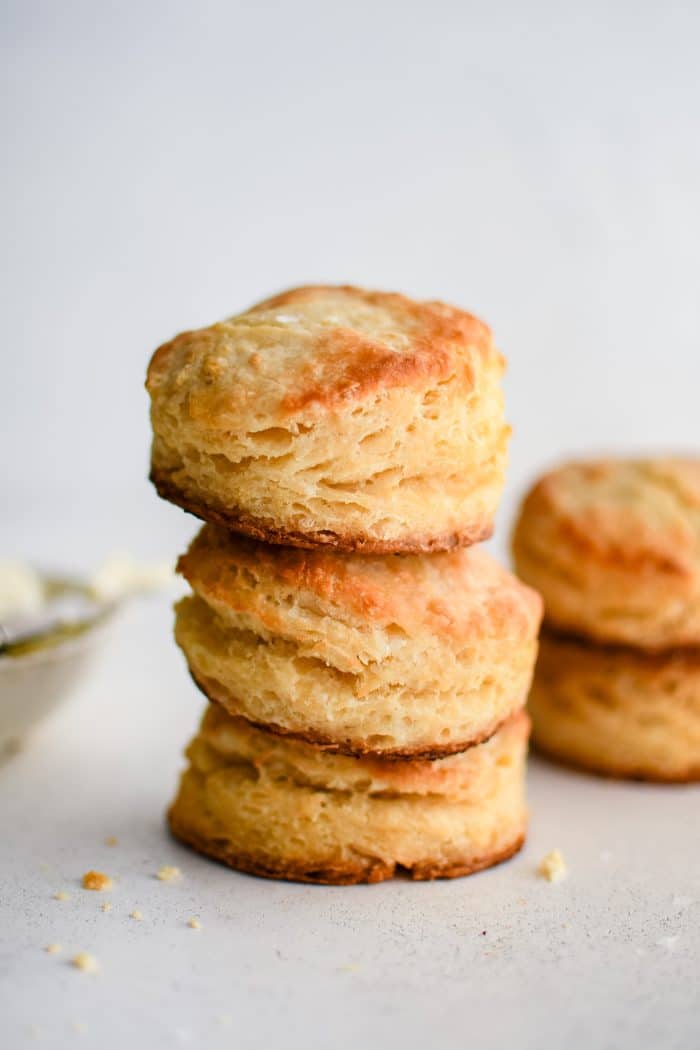
Making buttermilk biscuits from scratch is super easy, and the results are always worth it. With soft, flakey, and buttery layers, these biscuits are my absolute favorite. I love them so much that I’ll find any excuse to bake a batch or two.
Why You’ll Love These Buttermilk Biscuits
- Quick and easy to make with just a few simple ingredients.
- They’re soft and tall with perfectly flakey layers every time.
- Versatile enough for breakfast, brunch, or dinner.
- Delicious on their own or as part of a bigger meal.
You can enjoy these buttermilk biscuits with jam or marmalade, or just butter and a drizzle of hot honey. You can also make them part of a hearty breakfast by pairing them with savory Sausage Gravy or bake them into my family-favorite Biscuits and Gravy Casserole. And don’t forget, these biscuits are the perfect side for main dishes like beef tips and gravy, beef barley soup, or crack chicken soup.
Table of Contents
Key Ingredients
You’ll find the complete list of ingredients and printable recipe in the recipe card below.
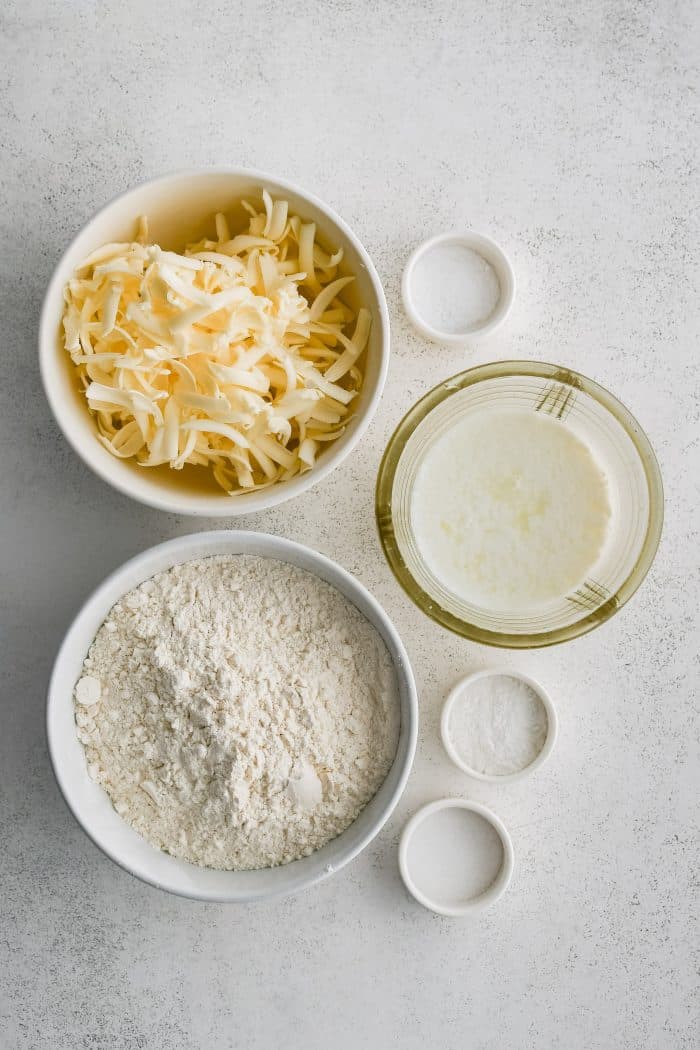
- All-purpose flour: Flour gives biscuits their tender, crumbly texture. To get an accurate measurement, fluff the flour in its container to loosen it up, then use the spoon and level method (see below) or weigh the flour using a kitchen scale. One cup of all-purpose flour weighs around 120 grams.
- Baking powder: A leavening agent that helps the biscuits rise.
- Baking soda: Reacts with the acidity of the buttermilk, providing additional lift.
- Salt: Enhances the flavor.
- Butter (cold, unsalted): Cold butter is the key to tender, flaky layers! It creates small pockets in the dough as it melts during baking, resulting in irresistible buttery layers.
- Buttermilk (cold): The acidity in buttermilk reacts with baking soda, helping the biscuits rise. It also adds a mild tangy flavor.
Using the Spoon and Level Method to Measure Flour Accurately
The spoon and level method accurately measures flour without packing it, which can lead to dense baked goods.
To do this, start by fluffing the flour in its container to loosen it. Then, use a spoon to scoop the flour into your measuring cup. Gently fill the cup without packing it down, allowing the flour to remain light and airy. Overfill the cup slightly, then use a straight edge, like the back of a knife, to level off the excess flour across the top of the cup.
How to Make Buttermilk Biscuits
1. Prepare the ingredients and preheat the oven: Preheat your oven to 425°F (220°C) and line a large baking sheet with parchment paper. Grate the butter using the large holes of a box grater or food processor, then place the shredded butter in the freezer for about 15-30 minutes so that it is very cold.
2. Mix the dry ingredients: In a large bowl, whisk the flour, baking powder, salt, and baking soda until combined.

3. Add the cold, grated butter: Add the grated butter to the bowl with the dry ingredients. Lightly toss the shredded butter in the flour mixture to coat.

4. Add the buttermilk and freeze for 10 minutes. Make a well in the center of the flour and butter mixture, and pour in the buttermilk. Stir no more than 20 times to prevent overworking the dough; it’s okay if it is a bit “shaggy.” Transfer the bowl to the freezer for 10 minutes (set a timer!)
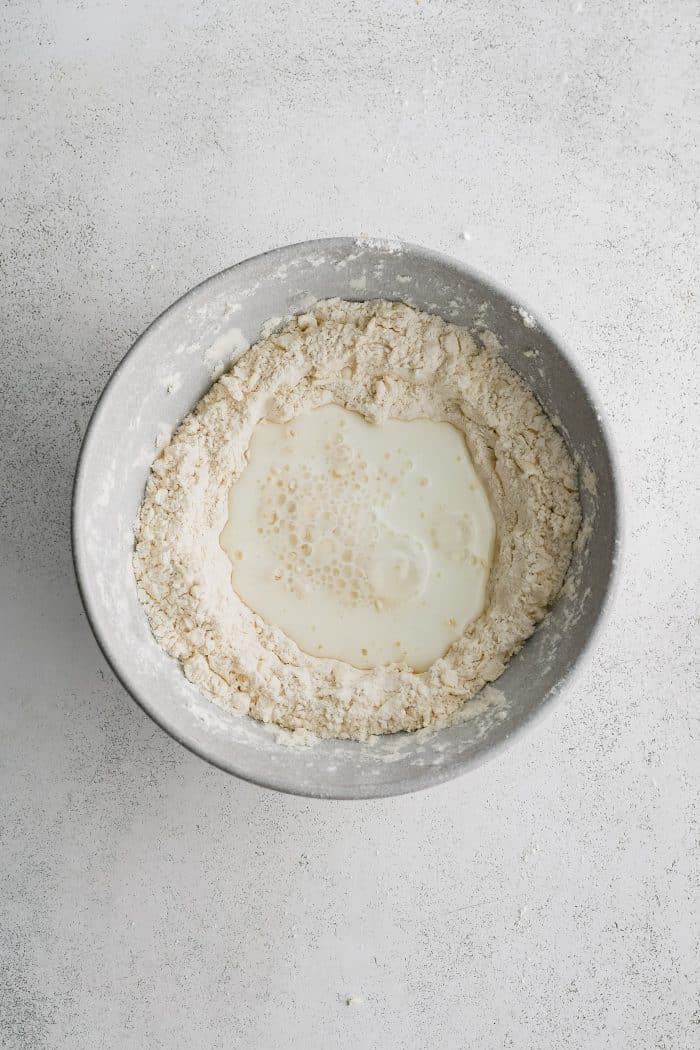
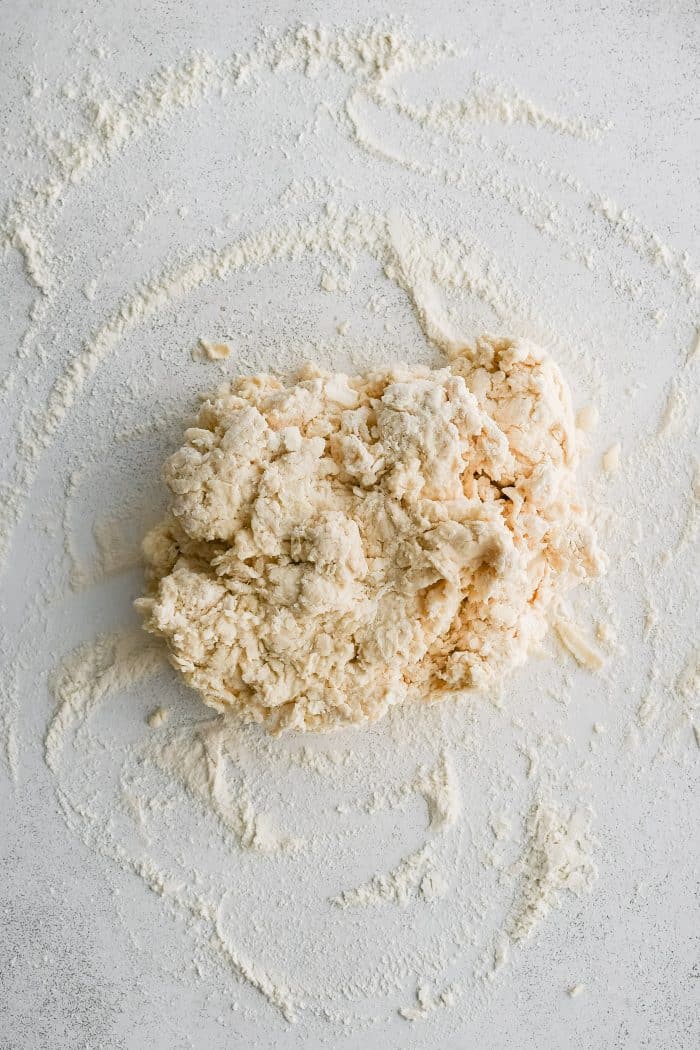
5. Turn out the dough: Lightly flour a clean work surface, then turn the dough out onto it. Touching the dough as little as possible, pat it into a rough rectangle about 1/2 inch thick.
6. Fold (laminate) the biscuit dough: You can fold your dough in half (as shown here) or in thirds (like you’re folding a piece of paper to place in an envelope). In either case, the same method applies. Since I folded my dough in half, that’s what I’ll be explaining below.
- Fold the dough in half, and then rotate it 90 degrees.
- Gently pat it down into a new 1/2-inch thick rectangle.
- Repeat this process two to three more times.
- Tip: A bench scraper helps left and fold the dough without sticking or warming it with your hands.
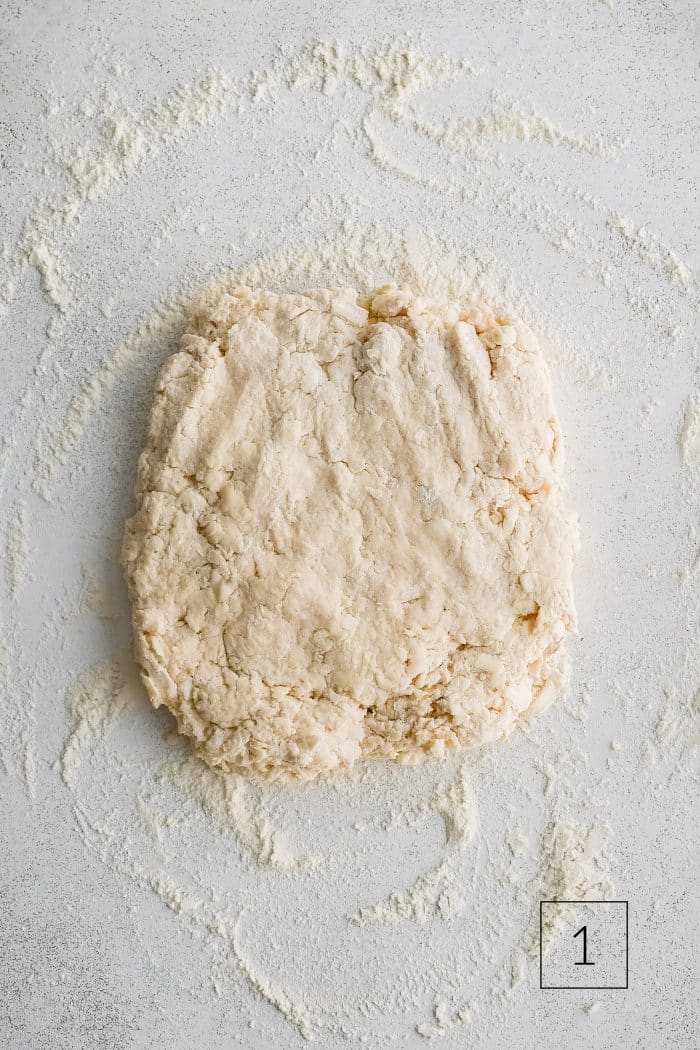
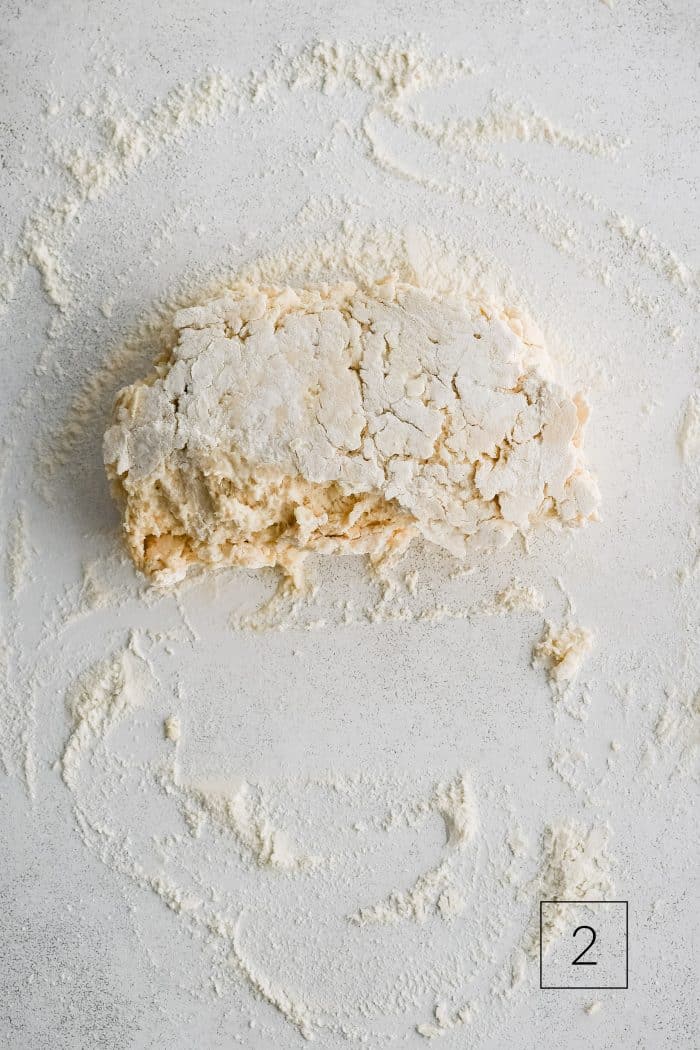
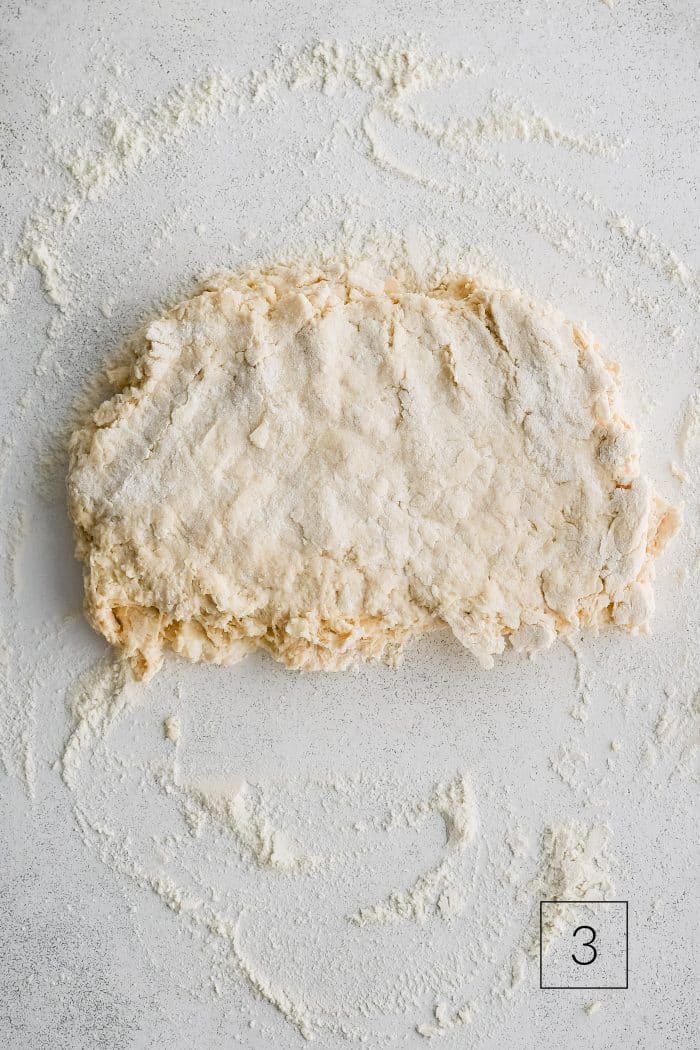
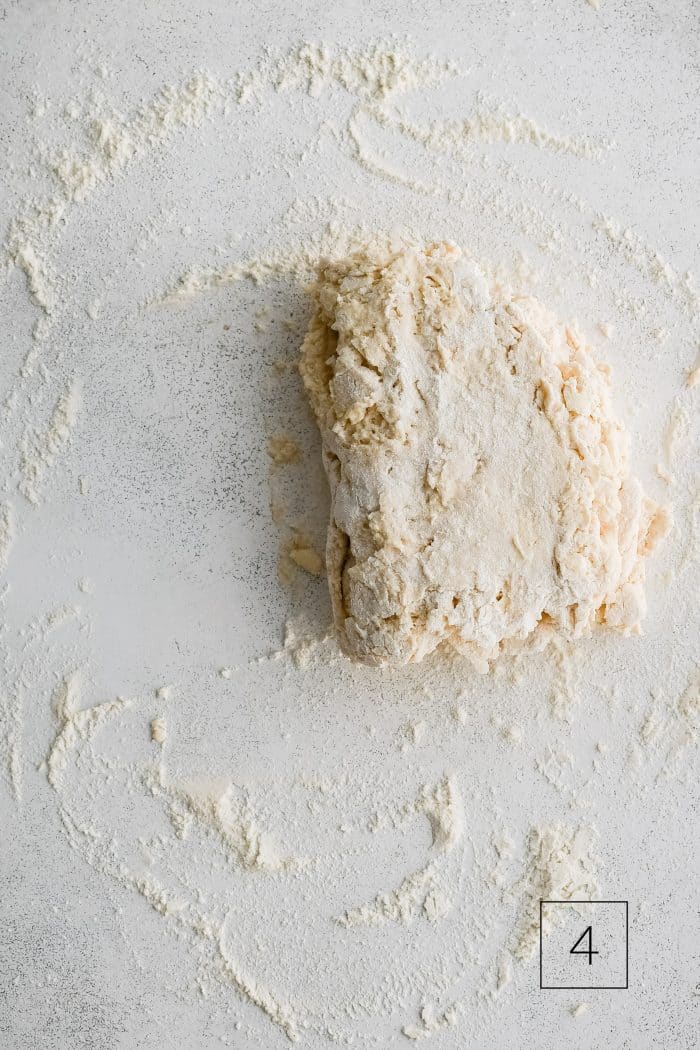
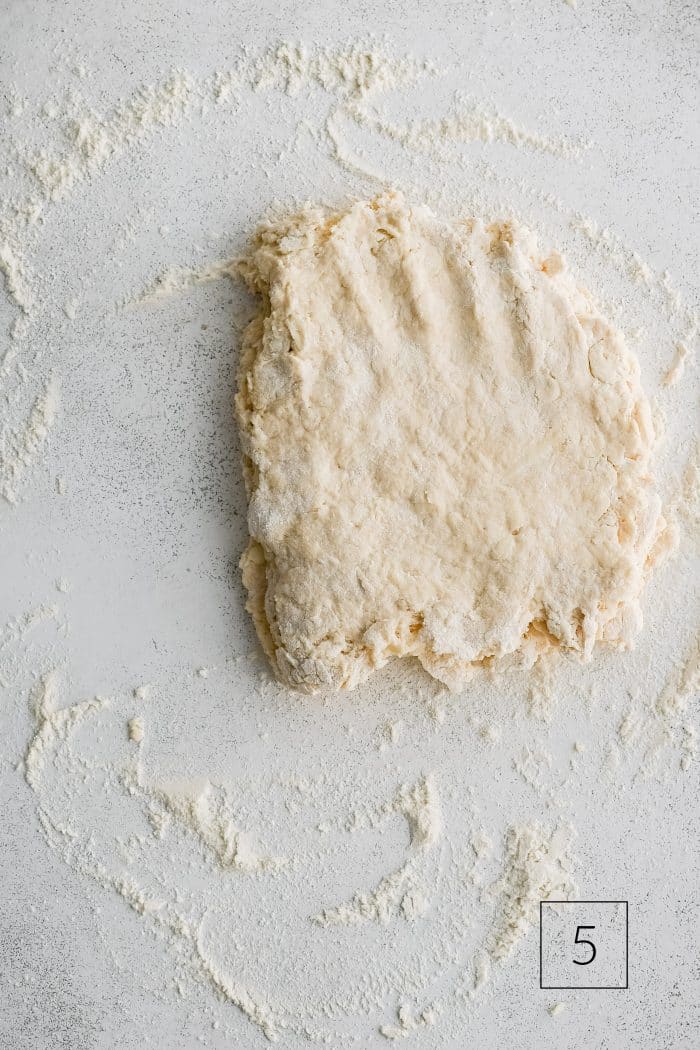
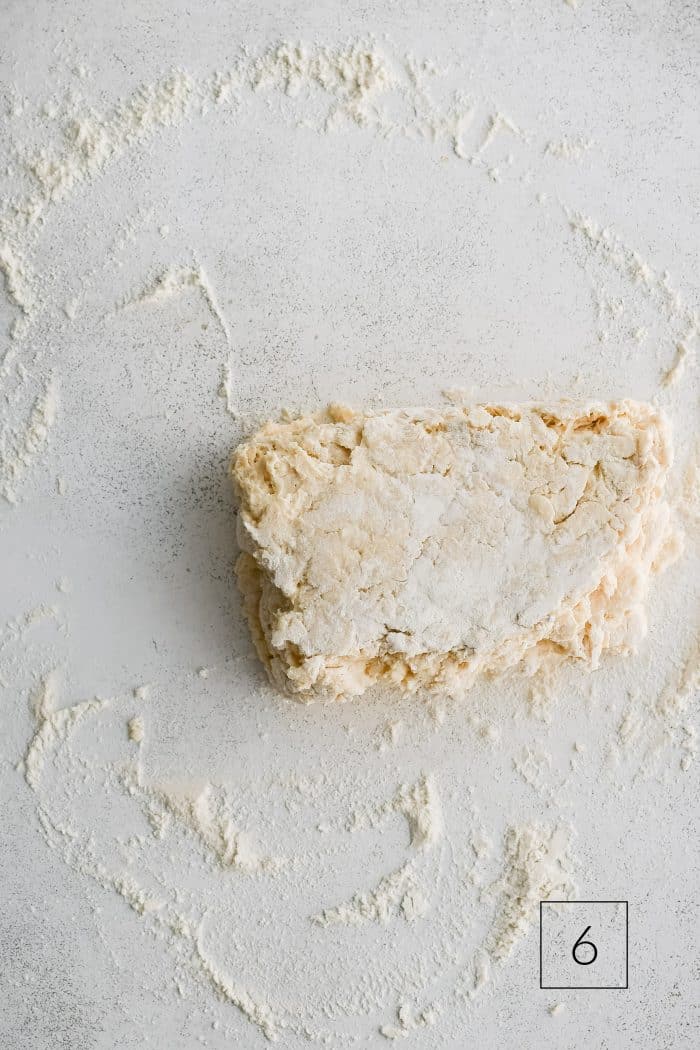
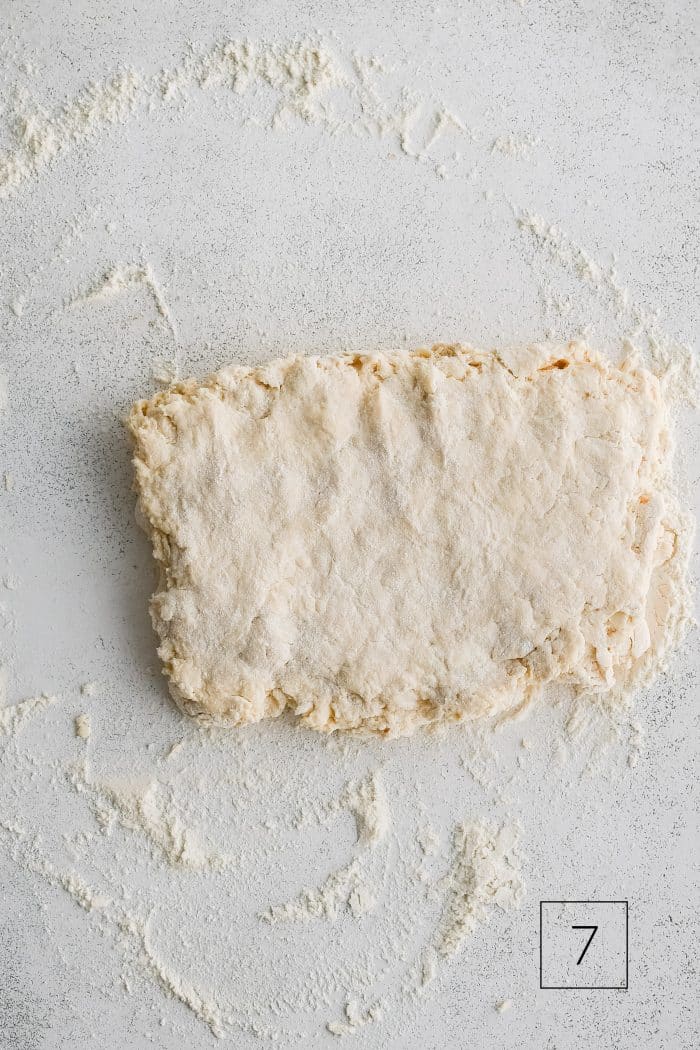
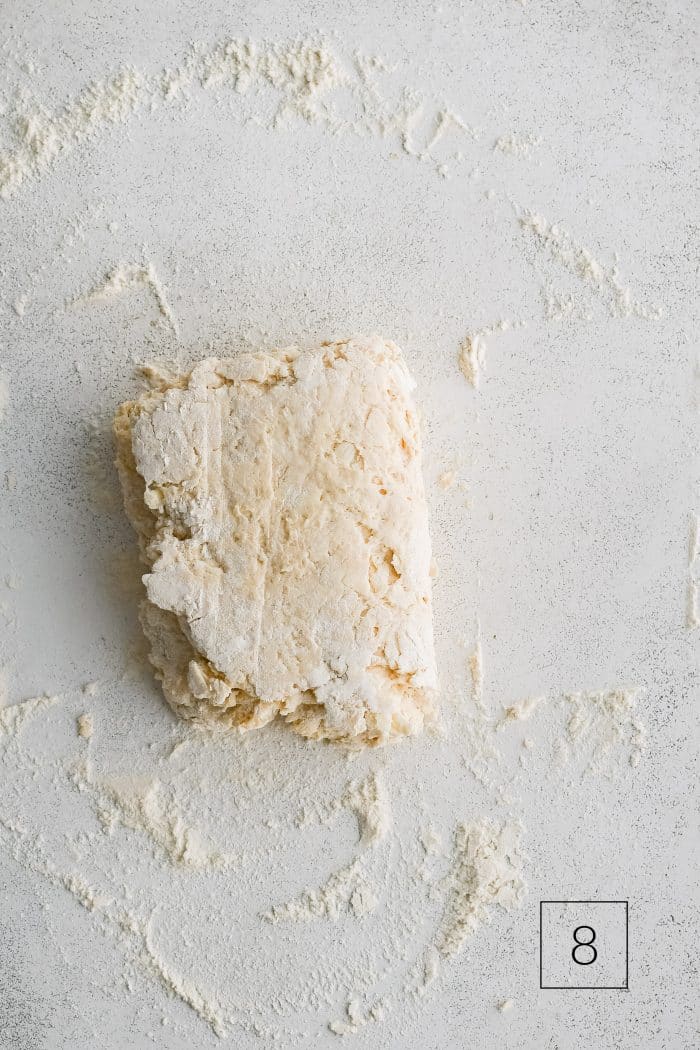
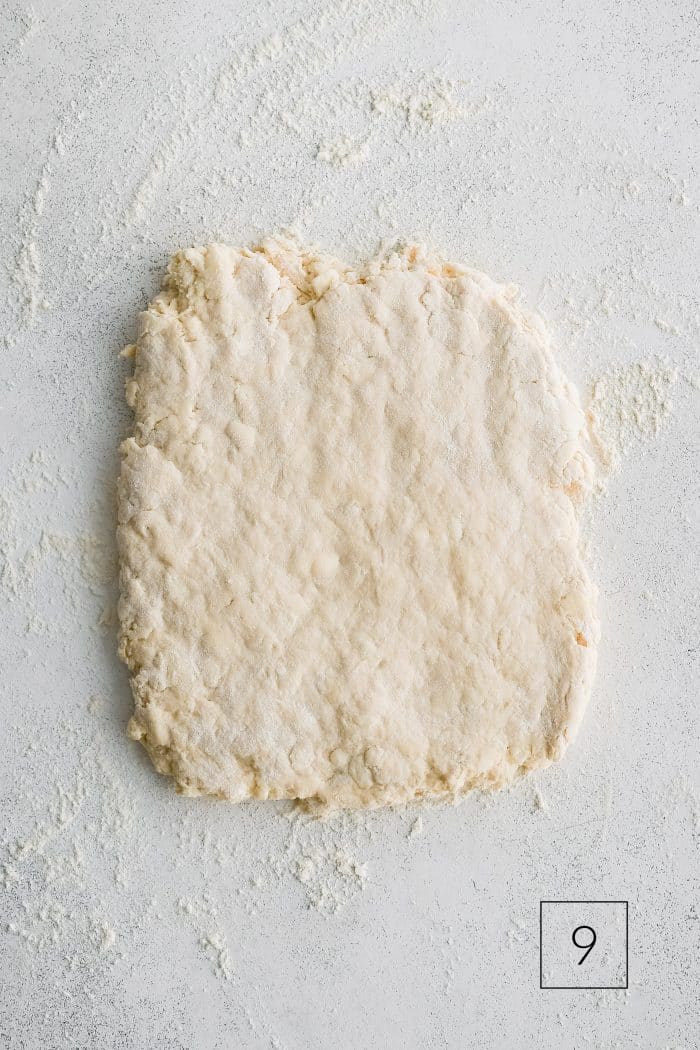
7. Roll out and cut the biscuits: After the final fold, pat the dough into a circle or rectangle approximately 1/2 to 3/4-inch thick. Use a 3 to 4-inch biscuit cutter to cut out 3-4 biscuits, pressing straight down without twisting. Place them on the prepared baking sheet. Gather any scraps and press the dough back together. Fold it in half again, and push it out again into a 1/2-inch-thick rectangle. Cut out as many biscuits as possible and place them on the baking sheet. Repeat until there isn’t enough dough to make a biscuit.

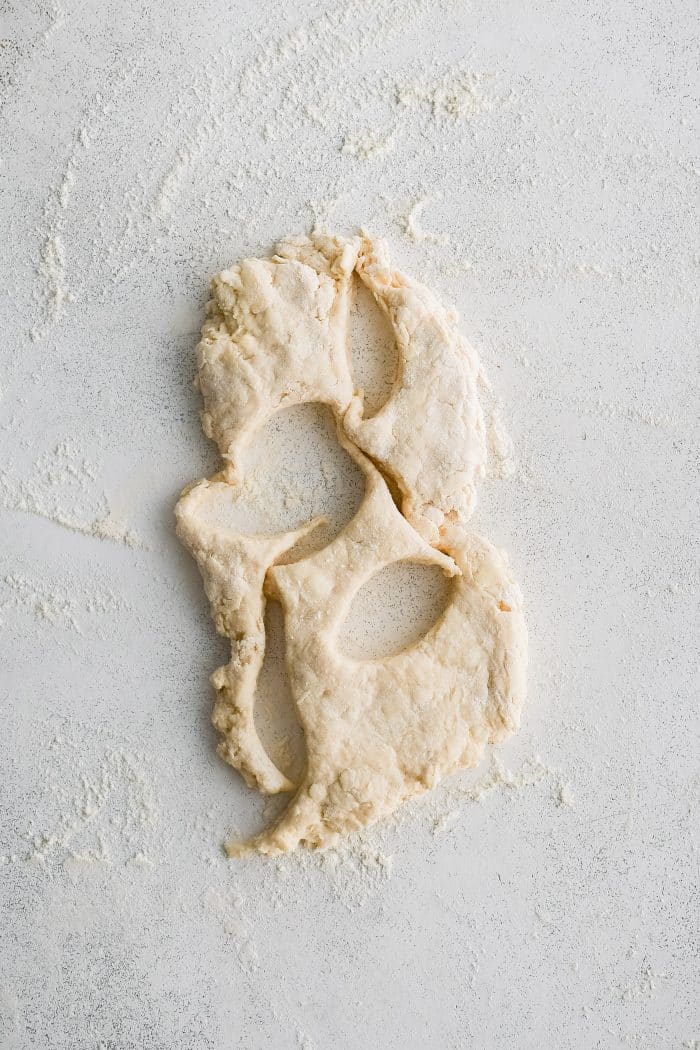
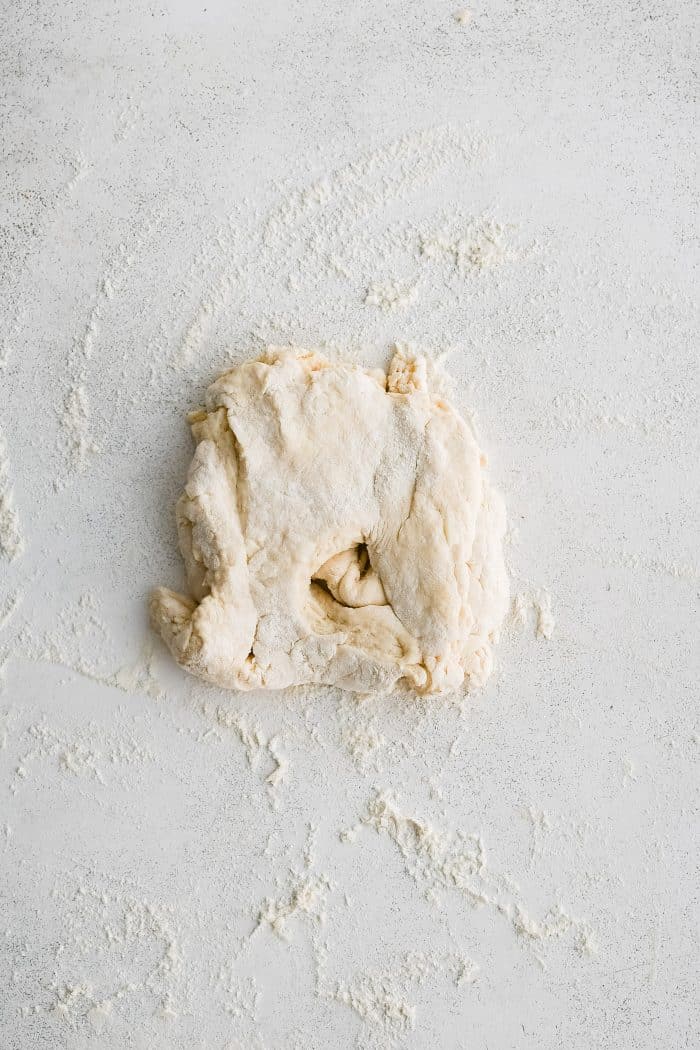
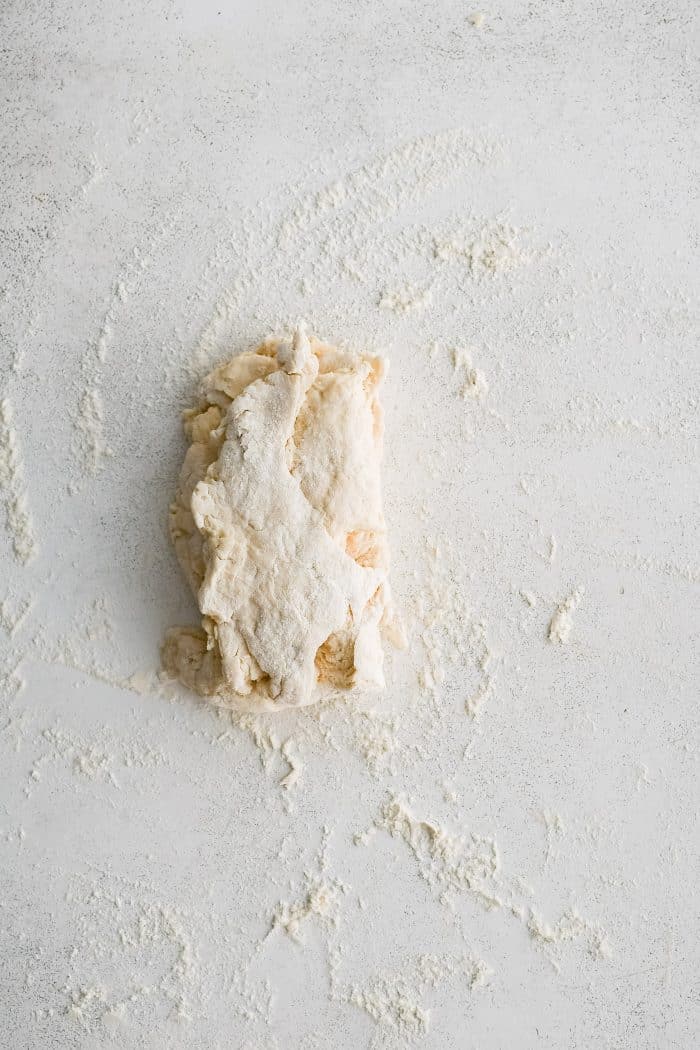
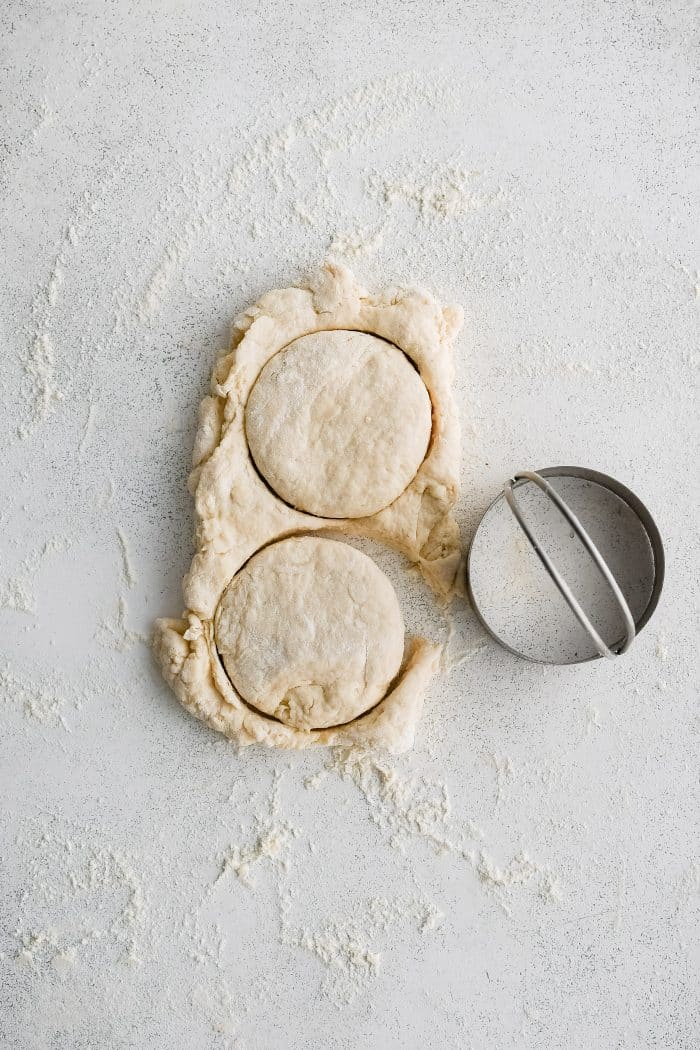
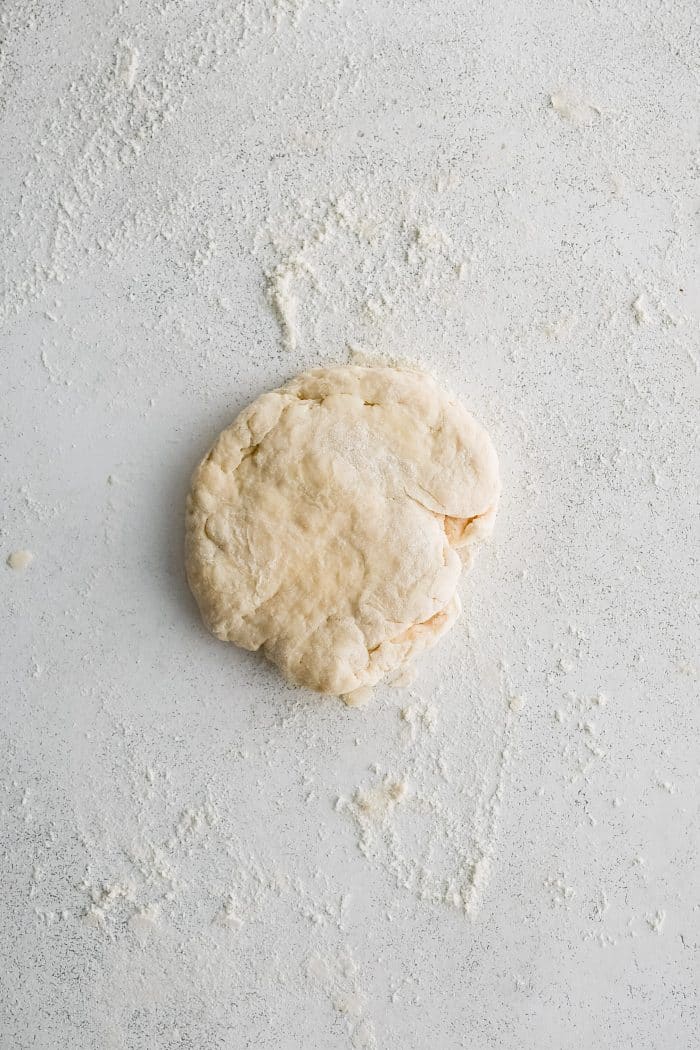
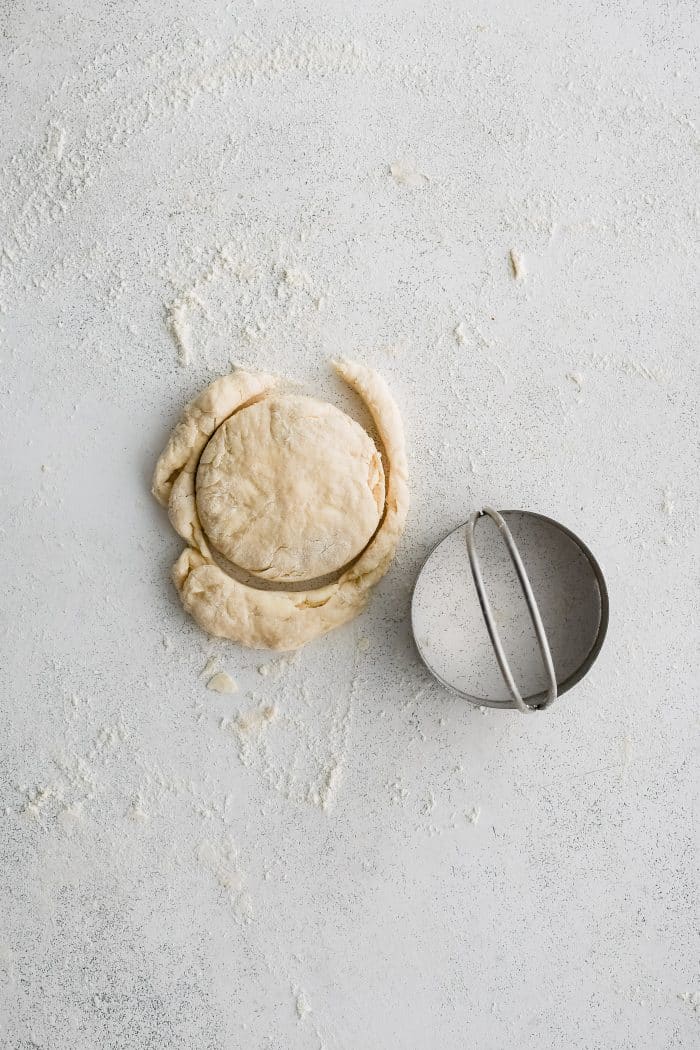
8. Bake: Brush the tops with buttermilk, then bake for approximately 10-12 minutes or until the biscuits are tall and golden brown on top (cooking time may vary).
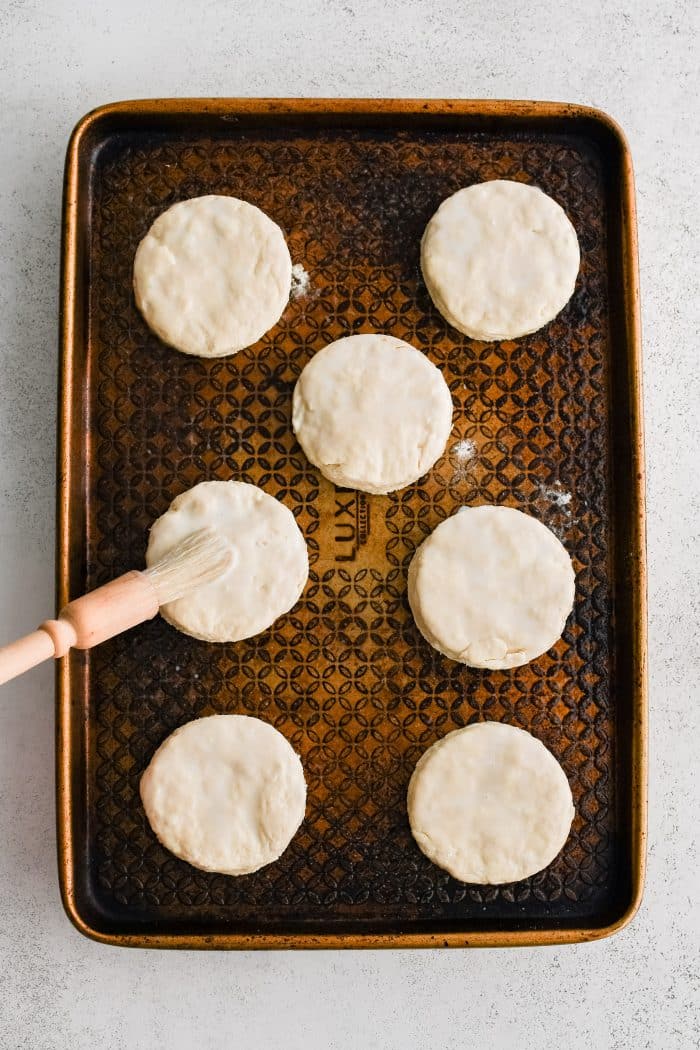
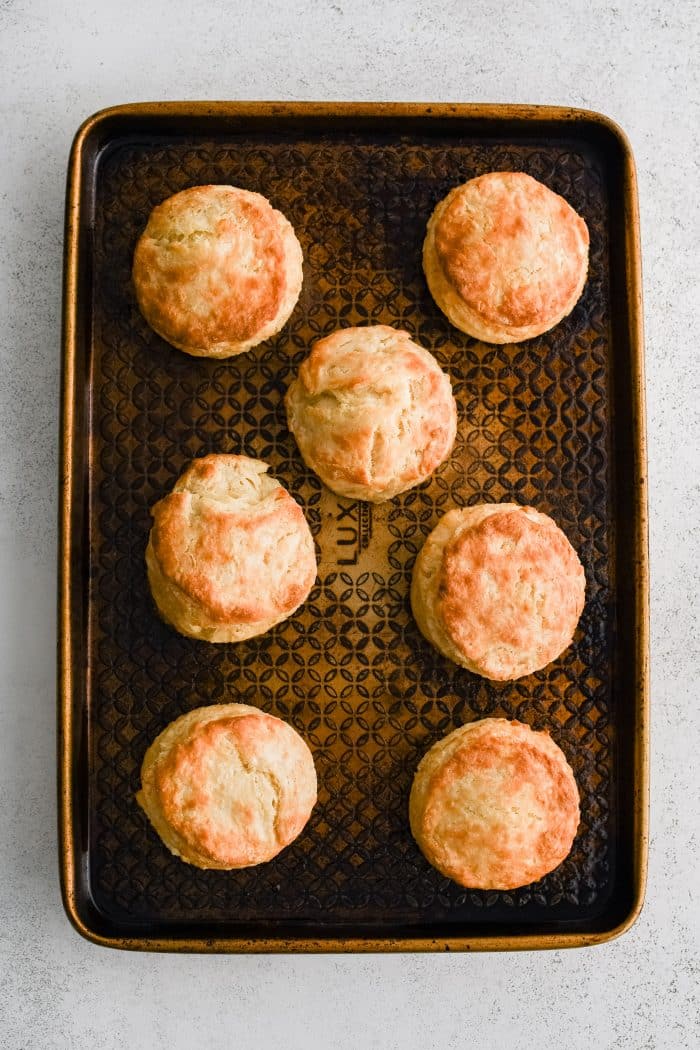
9. Serve: Let them cool for 5 minutes before serving with butter, honey, or jam if desired.
Pro Tips
- Use cold ingredients: The key to flaky layers is cold butter and cold buttermilk. Cold butter melts as the biscuits bake, releasing steam that creates flaky layers.
- Avoid overworking the dough: Over-mixing can develop gluten (read more about this in my post for Soft Dinner Rolls), producing dense, flat, and tough biscuits rather than soft and flaky. If the dough is crumbly, that’s ok.
- Fold the dough: Gently fold the dough several times to create layers. This technique encourages extra flakiness (yay!) by creating layers of butter and dough that expand as they bake.
- Do not twist the biscuit cutter: Strange, I know, but twisting the cutter can seal the edges and prevent the biscuits from rising to their full potential.
- Check your leavening agents: Make sure your baking powder and baking soda are fresh, as old leavening agents will result in flat biscuits.
Grated vs. Cubed Butter
- Grated butter: Grating cold or partially frozen butter into fine shreds makes it easier (and faster) to distribute it evenly throughout the dough. This results in a more uniform texture and helps avoid the mistake of overworking the dough.
- Cubed butter: Using cubed butter is the “traditional” method for making biscuits. It creates larger pockets in the dough, producing distinct and extra flaky layers.
- Which is better? Grated butter is the way to go for quick and easy mixing. Just be careful, as the butter will melt quicker when it’s shredded vs cubed. For classic biscuits, try using cubed butter. The key, either way, is to keep the butter cold and work quickly.
Buttermilk Substitute
Buttermilk isn’t something I always keep on hand. Fortunately, there are several substitutions that can be used in its place. To substitute 1 cup of buttermilk:
- Milk and lemon juice or white vinegar: Add one tablespoon of lemon juice or white vinegar to a measuring cup. Fill the rest with whole or 2% milk (to make one cup). Stir and let sit for 5-10 minutes until it thickens.
- Milk and cream of tartar: Whisk 1 3/4 teaspoons of cream of tartar into 1 cup of milk. Let it sit for a few minutes until it thickens slightly.
- Milk and plain yogurt or sour cream: Combine 3/4 cup plain yogurt or sour cream with 1/4 cup milk to make 1 cup.
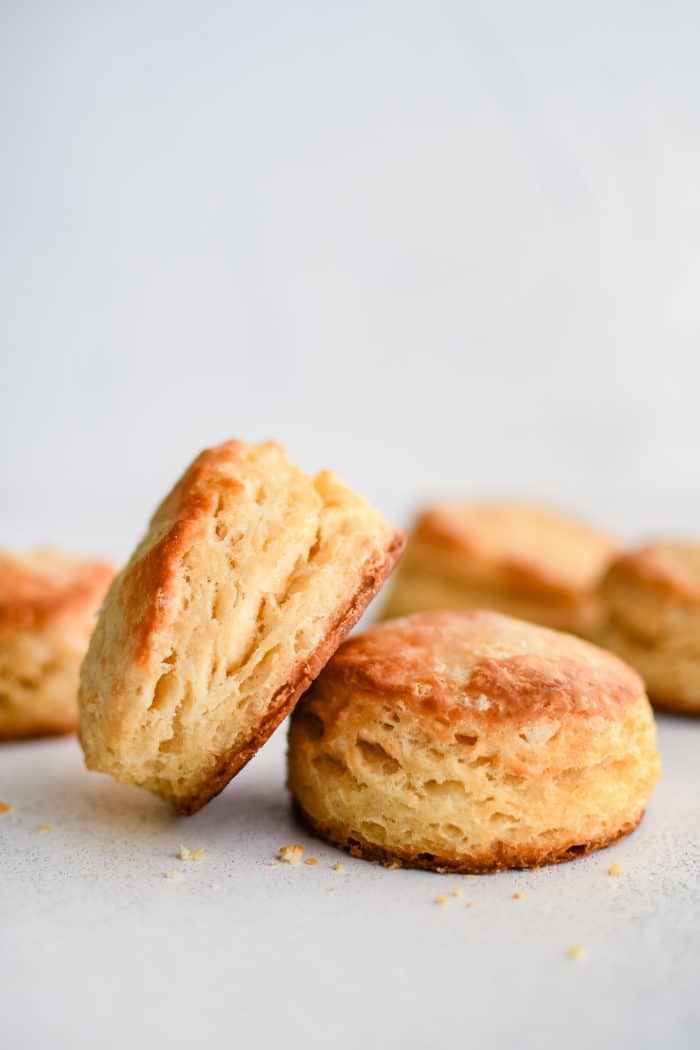
Storage and Freezing Tips
These biscuits are best enjoyed hot out of the oven or shortly after. However, they can be stored in an airtight container at room temperature for 2-3 days. Warm leftovers in the microwave for a few seconds or in a hot oven preheated to 300°F for about 3 minutes.
You can also freeze your homemade biscuits before or after you’ve baked them.
- Freezing before baking: Transfer the cut-out biscuits to a baking sheet lined with parchment paper. Transfer the baking sheet to the freezer and “flash freeze” for 1-2 hours or until the biscuits are frozen solid. Flash freezing prevents the biscuits from sticking together. Transfer the biscuits to a large freezer bag and freeze for up to 3 months. Bake from frozen, adding a few extra minutes to the total cooking time.
- Freezing baked biscuits: Allow your biscuits to cool completely, then transfer them to a large freezer bag and store them in the freezer for up to 3 months. Thaw at room temperature, then reheat in the microwave or preheated oven set to 300°F.
More Bread Recipes
If you make this buttermilk biscuit recipe, I’d love to hear how it turned out in the comment section below! Your review will help other readers in the community. And if you’re hungry for more delicious food inspiration and exclusive content, join my free newsletter here.
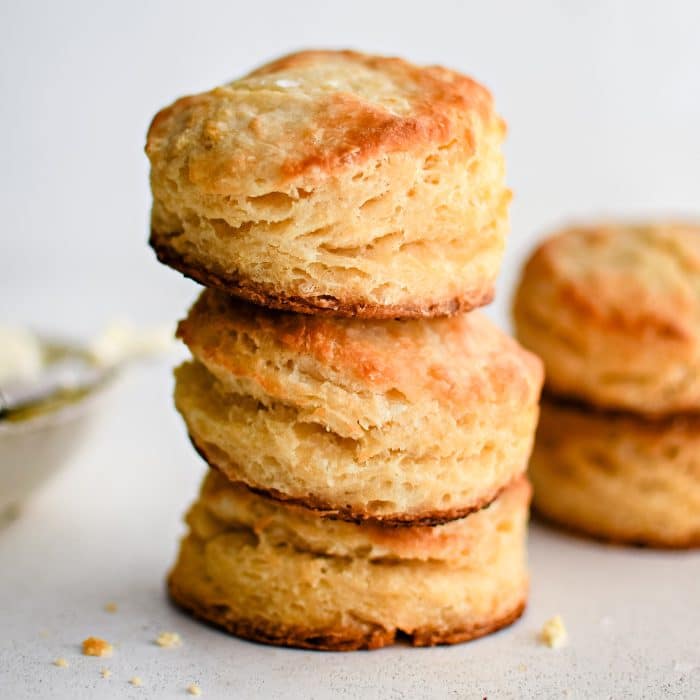
Buttermilk Biscuits Recipe
Ingredients
- 2½ cups all-purpose flour
- 1½ teaspoon baking powder
- 1 teaspoon salt
- ½ teaspoon baking soda
- 8 tablespoon (1 stick) cold unsalted butter, grated, then frozen for 15-30 minutes
- 1 cup buttermilk, cold
Instructions
- Preheat your oven to 425°F (220°C) and line a large baking sheet with parchment paper. Grate the butter using the large holes of a box grater or food processor, then place the shredded butter in the freezer for about 15-30 minutes so that it is very cold.
- In a large bowl, whisk the flour, baking powder, salt, and baking soda until combined.
- Add the grated butter to the bowl with the dry ingredients. Lightly toss the shredded butter in the flour mixture to coat.
- Make a well in the center of the flour and butter mixture, and pour in the cold buttermilk. Stir no more than 20 times to prevent overworking the dough; it’s okay if it is a bit “shaggy.”
- Freeze for 10 minutes (set a timer).
- Lightly flour a clean work surface, then turn the dough onto it. Touching the dough as little as possible, press it into a rough rectangle about 1/2 inch thick.
- Fold the dough in half and rotate it 90 degrees. Gently press it down into a new 1/2-inch thick rectangle. Repeat this process two to three more times. Tip: A bench scraper helps left and fold the dough without warming it with your hands.
- After the final fold, pat the dough into a circle or rectangle approximately 1/2 to 3/4-inch thick. Use a 3 to 4-inch biscuit cutter to cut out 3 to 4 biscuits. Press the biscuit cutter straight down without twisting. Place them on the prepared baking sheet.
- Gather any scraps and press the dough back together. Fold it in half again, and push it out again into a 1/2-inch-thick rectangle. Cut out as many biscuits as possible and place them on the baking sheet. Repeat until there isn’t enough dough to make a biscuit.
- Brush the tops with buttermilk, then bake for approximately 10-12 minutes or until the biscuits are tall and golden brown on top (cooking time may vary).
- Let them cool for 5 minutes before serving with butter, honey, or jam if desired.
Notes
- Yield is 6-8 biscuits.
- The key to soft, flaky biscuits is cold butter and cold buttermilk.
- Leftovers can be stored in an airtight container at room temperature for 2-3 days.
- Please see the full post for recipe tips, buttermilk substitutes, and freezing instructions.
Nutrition
Nutrition information is automatically calculated, so should only be used as an approximation.
Tools for this Recipe
Check out all of my kitchen essentials. (Amazon affiliate links*)
*As an Amazon Associate, I earn a small percentage from qualifying purchases.

